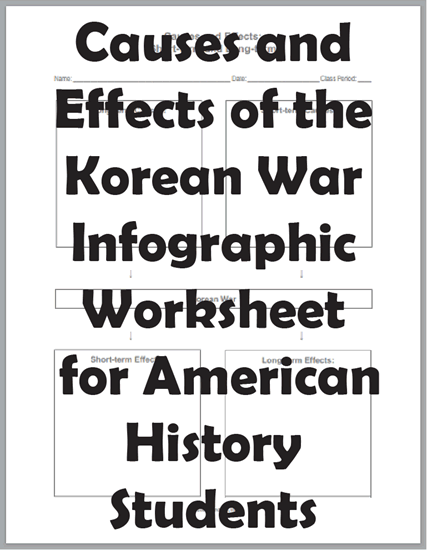Causes and Effects of the Korean War DIY Infographic Worksheet |
|---|
| www.studenthandouts.com > U.S. History > Postwar America > Worksheets |
 |  |
|---|
Students complete this chart, listing the short- and long-term causes and effects of the Korean War. Click here to print (PDF). Answers will vary. These causes and effects demonstrate the complex interplay of historical, political, and ideological factors that shaped the Korean War and its long-term impact on the region and the world. |
|---|
Short-term Causes:
|
| Postwar America Worksheets | Postwar America Learning and Study Games |
| Postwar America Outlines and PowerPoints | Postwar America Maps and Pictures |
| Postwar America Miscellany | Postwar America Books and Films |
| www.studenthandouts.com > U.S. History > Postwar America > Worksheets |









